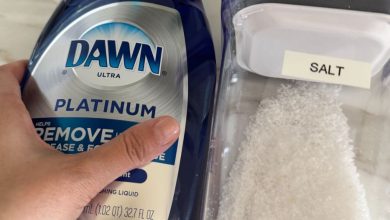Understanding Expiration Dates: Why They Matter for Your Health

In today’s fast-paced world, keeping track of the food we consume is essential for maintaining good health. Expiration dates on food packaging serve as crucial guides to help us understand the shelf life of various products. These dates are not random; they are scientifically determined to ensure that the food remains safe and of high quality up until a particular time. Understanding what expiration dates mean and the risks of consuming food past these dates is vital for preventing foodborne illnesses and ensuring overall well-being.
ADVERTISEMENT
The Importance of Adhering to Expiration Dates
Adhering to expiration dates is crucial for several reasons. Firstly, it ensures that the food we consume is safe to eat. Consuming food past its expiration date can lead to severe health risks, including food poisoning. Additionally, expired food often loses its nutritional value and flavor, which can negatively impact our overall health and culinary experience. By taking expiration dates seriously, we also contribute to minimizing food waste, thus supporting a more sustainable environment.
ADVERTISEMENT
How to Read Expiration Dates
Understanding expiration dates can sometimes be confusing due to different terms like ‘best by,’ ‘use by,’ and ‘sell by’:
ADVERTISEMENT
- Best by: Indicates the period during which the product is at its peak quality.
- Use by: The last date recommended for using the product while at peak quality, after which it may not be safe to consume.
- Sell by: For retailers to ensure proper stock rotation.
Breaking down these terms can help you make better decisions about the safety and quality of the food you purchase and consume.
Health Risks of Eating Expired Foods
Eating food past its expiration date can expose you to several health risks, including foodborne illnesses caused by bacteria such as Salmonella, E. Coli, and Listeria. These bacteria can lead to symptoms such as vomiting, diarrhea, stomach cramps, and fever. In severe cases, they can even be life-threatening, particularly for vulnerable populations like young children, the elderly, pregnant women, and those with weakened immune systems.
Common Indicators of Spoiled Food
Recognizing the signs of spoiled food can serve as an additional safeguard against consuming expired items. Look out for:
- Off smells
- Changes in color or texture
- Mold growth
- Presence of slime
- Sour or unusual taste
When in doubt, it’s safer to dispose of the questionable food item.
Food Safety Tips for Storing Perishable Items
Proper storage of perishable items is key to extending their shelf life and maintaining safety:
- Keep your refrigerator at or below 40°F (4°C) and your freezer at 0°F (-18°C).
- Store raw meat, poultry, and seafood on the bottom shelves to prevent their juices from contaminating other foods.
- Use airtight containers for opened products and label them with the date of purchase.
- Practice the ‘first in, first out’ method to ensure older items are used before newer ones.
Foods to Watch Closely:
- Dairy Products: High moisture content accelerates bacterial growth. Consuming expired dairy can cause food poisoning.
- Fresh Meat and Poultry: Highly perishable and prone to contamination. Symptoms include nausea, vomiting, and severe gastrointestinal distress.
- Eggs: Can carry Salmonella bacteria. Test freshness by placing in water—if they float, they are no longer safe.
- Pre-packaged Deli Meats: Prone to bacterial contamination once opened. Can be harmful especially to vulnerable populations.
- Fish and Seafood: Deteriorate rapidly and can cause severe food poisoning. Produces harmful toxins when spoiled.
- Soft Cheeses: Higher moisture content makes them susceptible to mold and bacteria.
- Fresh Berries: Short shelf life and quickly become moldy.
- Leafy Greens: Can harbor bacteria like E. coli.
- Mold-prone Items like Bread and Pastries: Mold spores cause respiratory issues and allergic reactions.
- Condiments with Natural Ingredients: Spoil quickly once opened.
- Pre-made Salads and Sandwiches: Short shelf life due to perishable ingredients.
- Leftover Cooked Meals: Should be consumed within a few days to avoid bacterial growth.
Conclusion: Prioritizing Health and Safety
Properly managing and adhering to expiration dates is crucial for ensuring our health and well-being. By being vigilant about the foods we consume and how we store them, we protect ourselves and our families from the risks associated with expired items. Staying informed about food safety practices, understanding expiration labels, and recognizing signs of spoilage are essential steps in maintaining a healthy and safe diet. Prioritize health and safety by making mindful choices and adhering to guidelines that ensure the quality and safety of the foods you eat.




